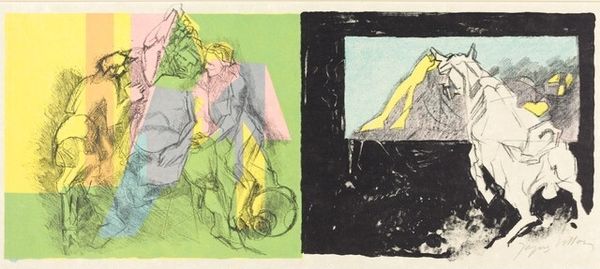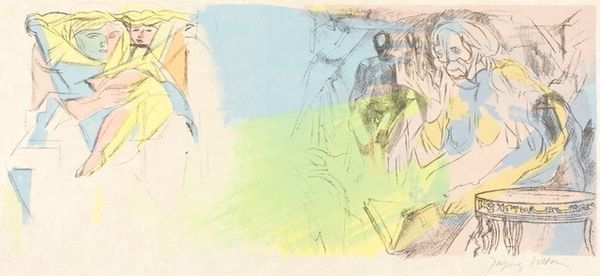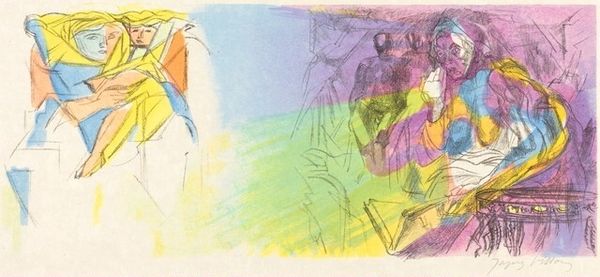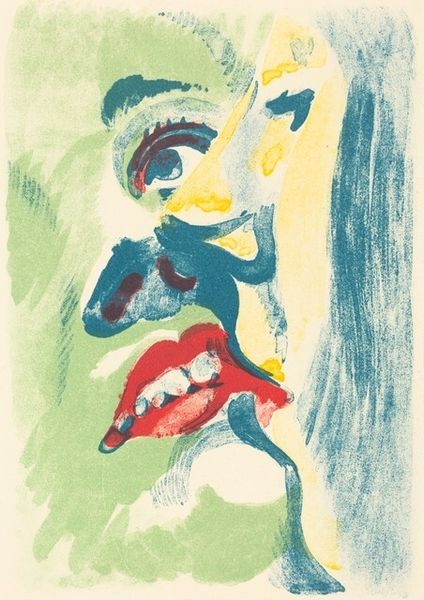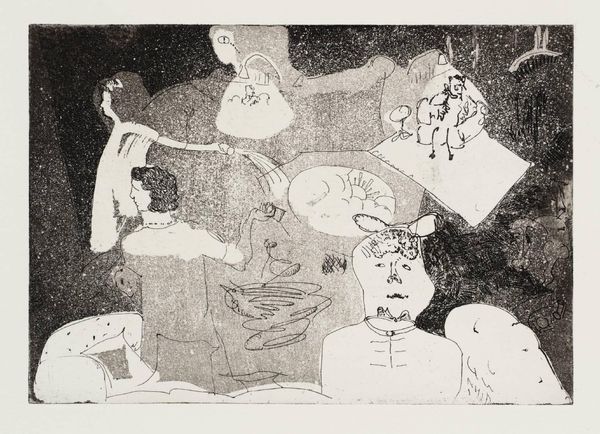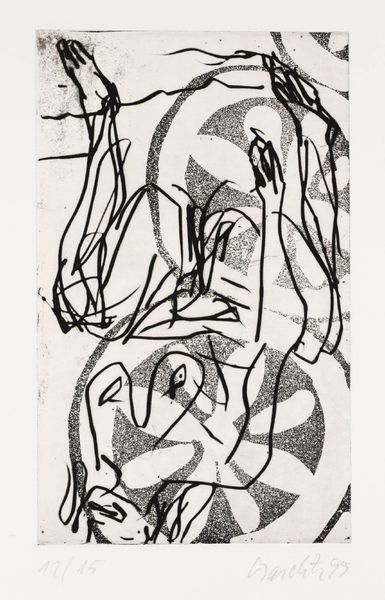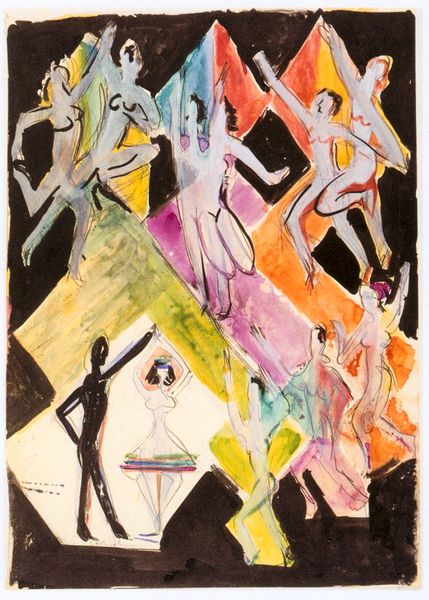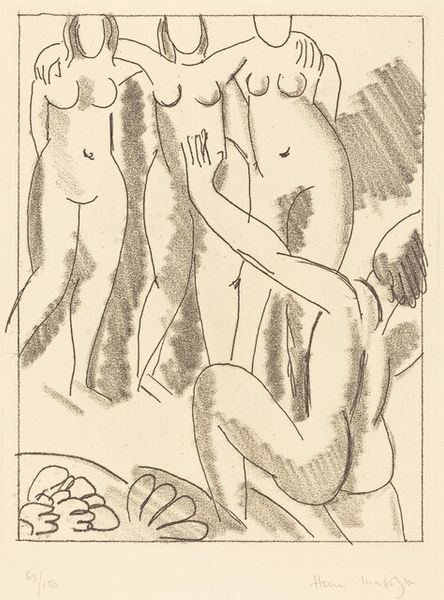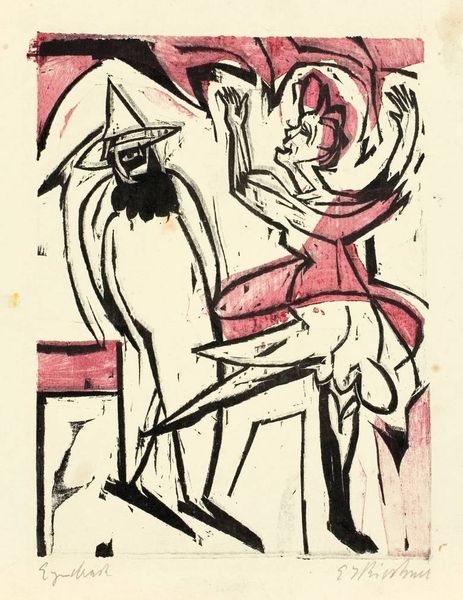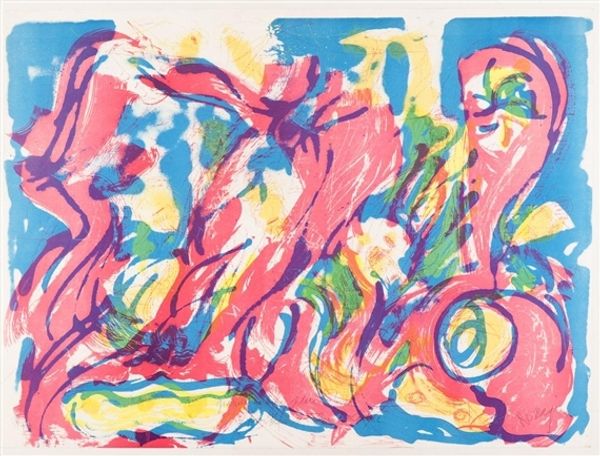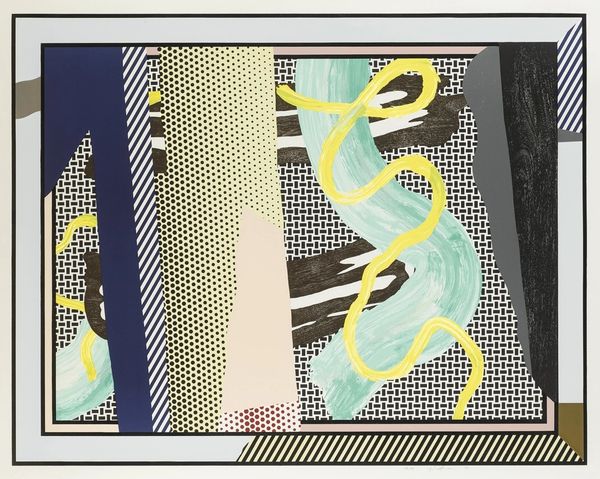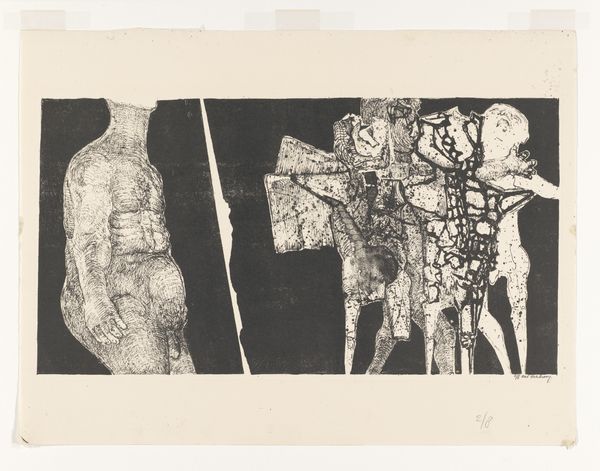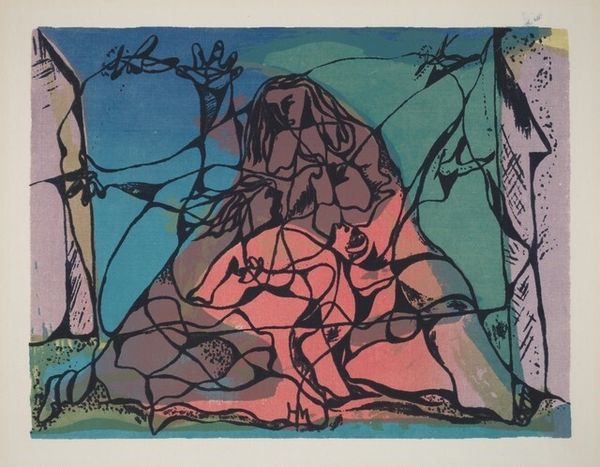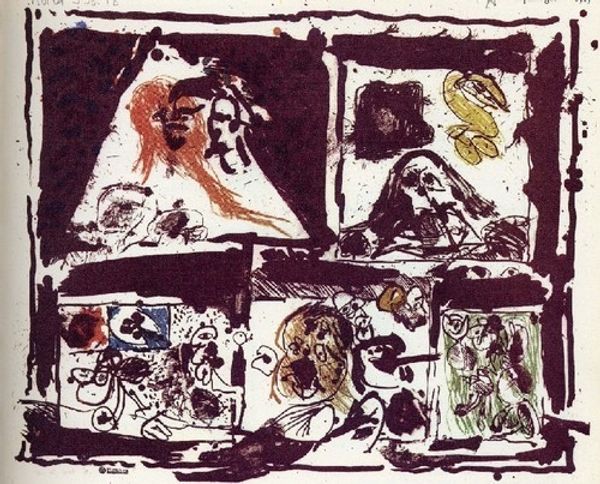
drawing, print, ink
#
drawing
#
cubism
# print
#
landscape
#
figuration
#
ink
#
abstraction
#
modernism
Copyright: National Gallery of Art: CC0 1.0
Curator: Here we have Jacques Villon's "Sixth Bucolic: Silenus, Pasiphae, and the Bull," created in 1955. It's a print, utilizing ink, with distinct cubist influences. What strikes you about it initially? Editor: The contrast is pretty stark. On the left, there’s this almost pastel, dreamlike sequence with vaguely human forms. On the right, it's a much darker, intensely textured space occupied by...are those bulls? It's unnerving. Curator: Yes, Villon is drawing upon classical mythology here. The title refers to the story of Pasiphae, the wife of King Minos, who, driven by a god's curse, falls in love with a bull. Silenus, often associated with Dionysus, represents a kind of rustic wisdom or revelry. The piece hints at primal desires and mythical narratives that society often tries to suppress. Editor: Right, that juxtaposition becomes really interesting then. The light, almost sanitized rendering on one side, and then this raw, visceral depiction of animal desire on the other. Are we looking at the polite world versus what lurks beneath? A visual exploration of forbidden desires, maybe reflecting repressed social anxieties of the time? Curator: Precisely! And remember the social context: this was created in the post-war era, when traditional social mores were being questioned, but not entirely overturned. Cubism itself, which fractures form and perspective, can be seen as mirroring this sense of societal fragmentation and re-evaluation of fundamental structures. Villon was revisiting classical narratives to explore these very modern anxieties and social tensions. Editor: I find myself focusing on the act of seeing itself. The Cubist style really makes you work to piece together the narrative. It challenges our perceptions of normalcy. What did it mean to reclaim these stories and these aesthetics, pushing them through a distinctly modernist lens? Is he urging us to recognize that the primal is still within the polite? Curator: Well, Villon wasn't alone in mining classical themes for modern commentary. Many artists after both World Wars grappled with themes of destruction, rebirth, and the enduring nature of human passions. These myths offered frameworks to talk about trauma and change without being overly literal. This work is one way artists negotiated with their world, by representing historical myths and social structures, by trying to tear it down. Editor: Looking at it again, that fractured composition feels key. Maybe Villon is less interested in judgment and more interested in acknowledging the multiplicity of human experience. Even our most basic drives are multifaceted. Thanks, this was eye-opening! Curator: My pleasure! Hopefully, our exploration gave a better understanding of the context surrounding the work and can influence the impact on how it is received.
Comments
No comments
Be the first to comment and join the conversation on the ultimate creative platform.
